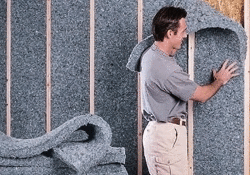Bathroom accidents and safety aspects to Follow

Bathroom Safety Tips with bathroom fittings and tiles selection MORE THAN A QUARTER of all home accidents occur in the bathroom. Bathroom fittings, tiles and other accessories could be selected with due care . Slippery bathroom tiles can be avoided. Bathroom lighting could be chosen with care that is not giving any electric shock. Bathroom plumbing works shall taken care and can be done with professionals. Pipe leakage and other water issues should be taken care without any delay. Bathroom fixtures and fittings should ensure the safety of the person using it and at the same time the color and theme of the house also considered while choosing the bathroom fittings and fixtures, bathroom lighting, bathroom tiles and marbles. The most frequent mishap? Slipping and falling while getting into or out of the tub in the bathroom. Here are some commonsense tips for making your bathroom safer: • Install grab bars in potentially slippery spots in the bathroom. • Use slip-resistant tiles and materials and surfaces in wet areas. • Use temperature-regulating tub and shower valves in the bathroom. • Install locks on medicine cabinets. • Be sure bathroom outlets are protected by GFCI (ground-fault circuit interrupter) circuitry. • Install only privacy locks on bathroom doors, which can be quickly and easily opened in case of emergency. Yes It goes without saying that bathroom safety should be paramount in any good bathroom design. Unfortunately, common sense is sometimes clouded by our aesthetic sense. Who doesn't admire the gleaming surface of a shiny marble floor? But a floor like this is slippery when wet,and bathrooms are often quite wet. In fact, the bathroom is one of the most dangerous areas in the home. Fortunately, a little planning goes a long way in reducing the risks in a bathroom. Accessibility is also an important consideration in all aspects of home design. The built environment is geared primarily toward adults in perfect health, which ac- counts for less than a quarter of the population. For the remaining 75 percent, size and physical limitations sometimes make it difficult-if not impossible-to use the facilities that adults take for granted. While people can adapt to their environment to some extent, a better and safer approach is to adapt the environment to meet the changing needs of those using it. Accessibility doesn't necessarily require extensive modifications or expensive fixtures or accessories, and in most cases it can be enhanced with very little impact on the overall appearance of the bath.